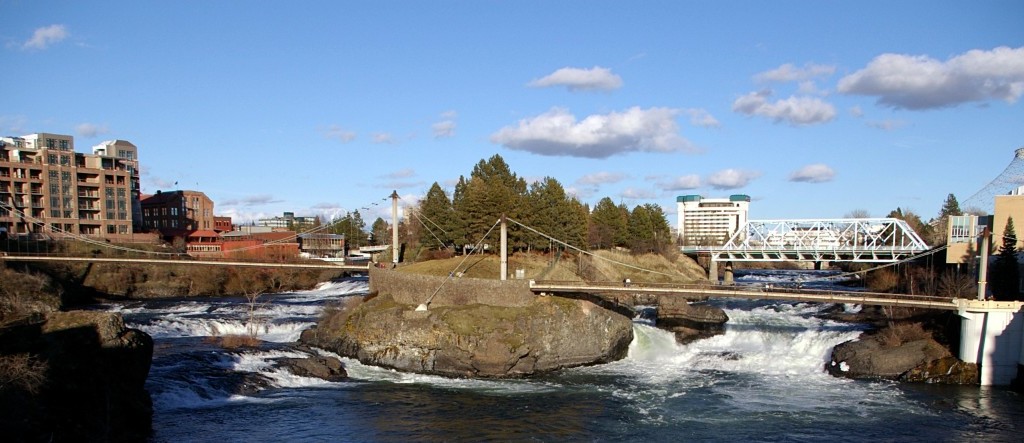Spokane
Spokane features beautiful hillside districts of historic homes alongside easy horizontal growth and the challenges of maintaining strong centers, including downtown.
Spokane, the main city of Eastern Washington State, features the world’s grandest downtown waterfall, and beautiful hillside districts of historic homes, but beyond these attractions it faces many of the issues of Mountain West cities: easy horizontal growth and the challenges of maintaining strong centers, including downtown. Spokane’s greatest transit resource is the Spokane Plaza, a world-class climate-controlled hub for the transit system linked by skybridges to major retail and activities.
At the turn of the century, Jarrett Walker (working with Nelson\Nygaard) served as the lead planner in an ambitious redesign of Spokane’s transit network. The redesign replaced an infrequent radial network with the first elements of a frequent grid, introducing secondary connection points that allowed more people to reach non-downtown destinations without going downtown. This was a new concept for Spokane, and the process of building public and stakeholder acceptance was long and challenging, requiring consensus-building across typical left/right divides. Once implemented, the new network quickly proved itself. It has since been through a series of expansions and service cuts but the basic structure is unchanged, and is likely to be the foundation of Spokane’s mobility for some time.
Jarrett returned numerous times for follow-up work, including elements of a light rail and BRT alternatives analysis for the Spokane Valley. In 2014 he gave a major public lecture on transit issues in Spokane, and also facilitated a workshop of major civic leaders designed to help them forge consensus on transit issues.

